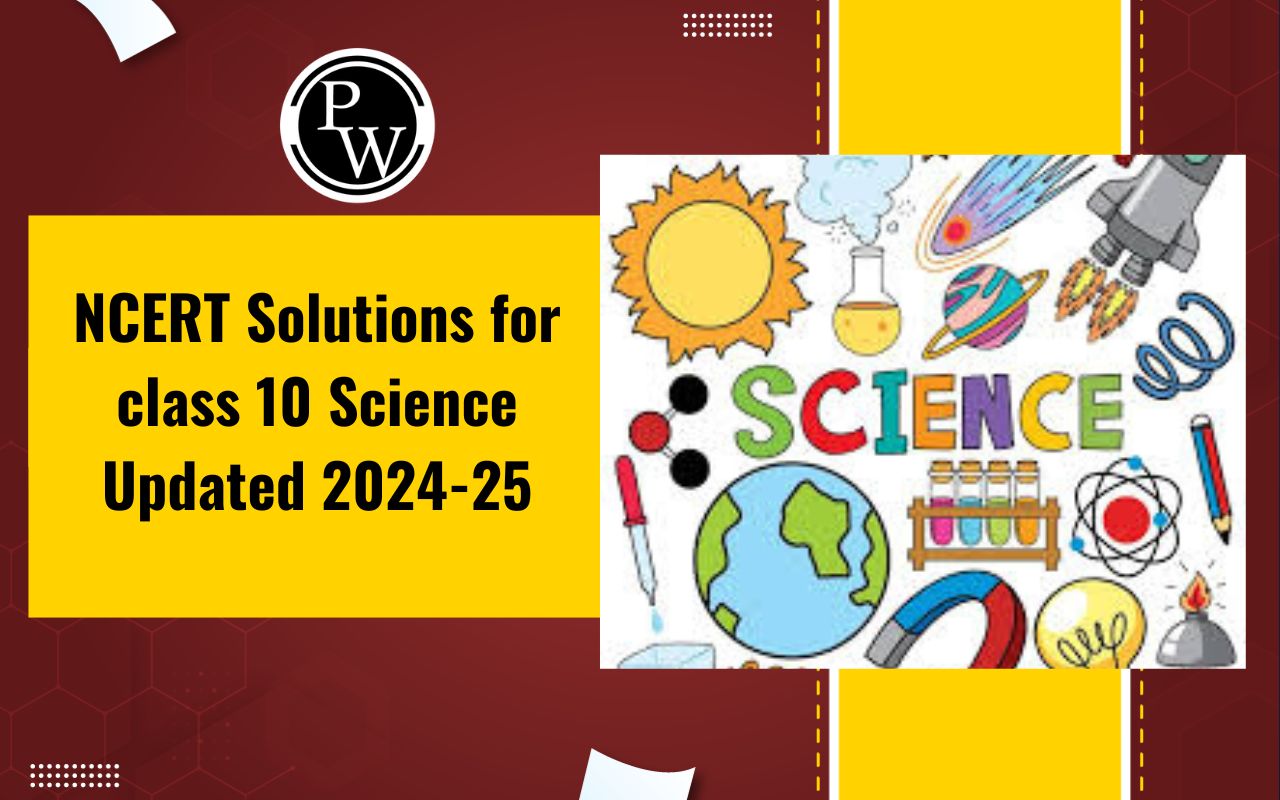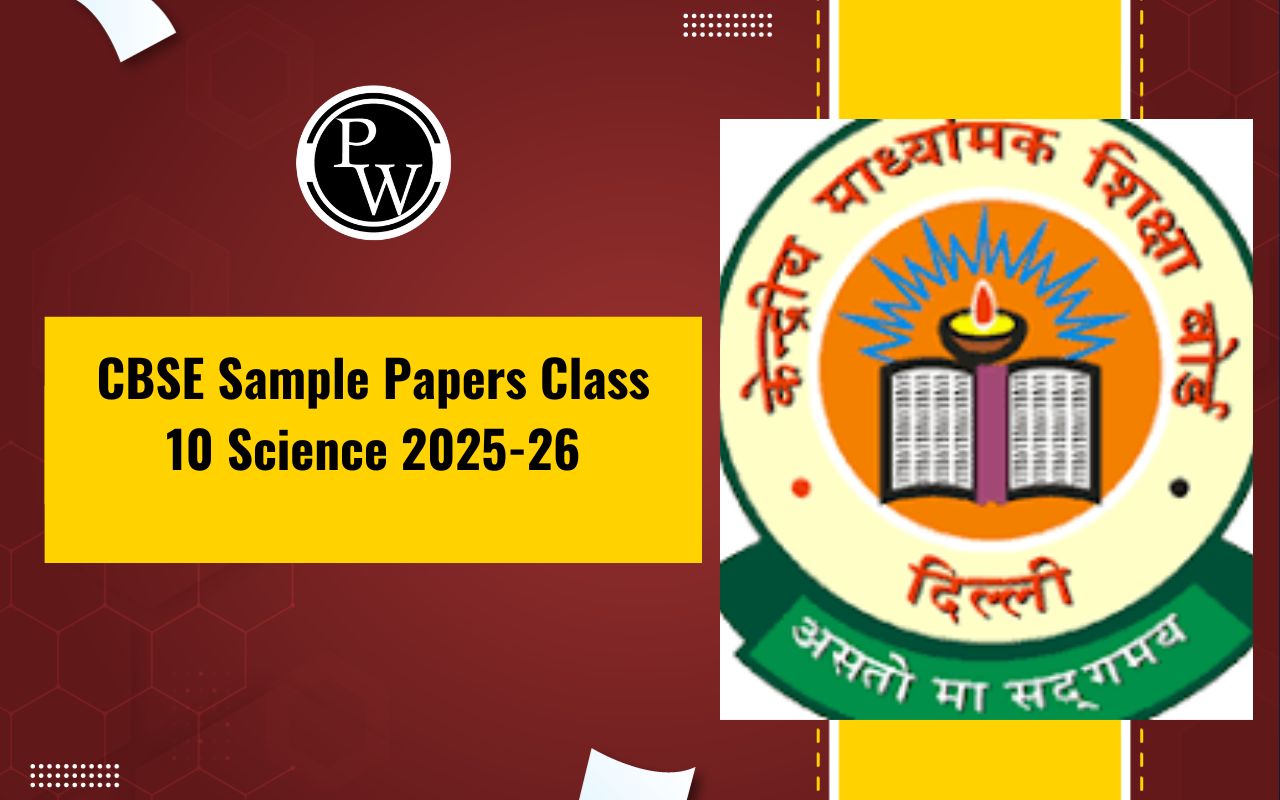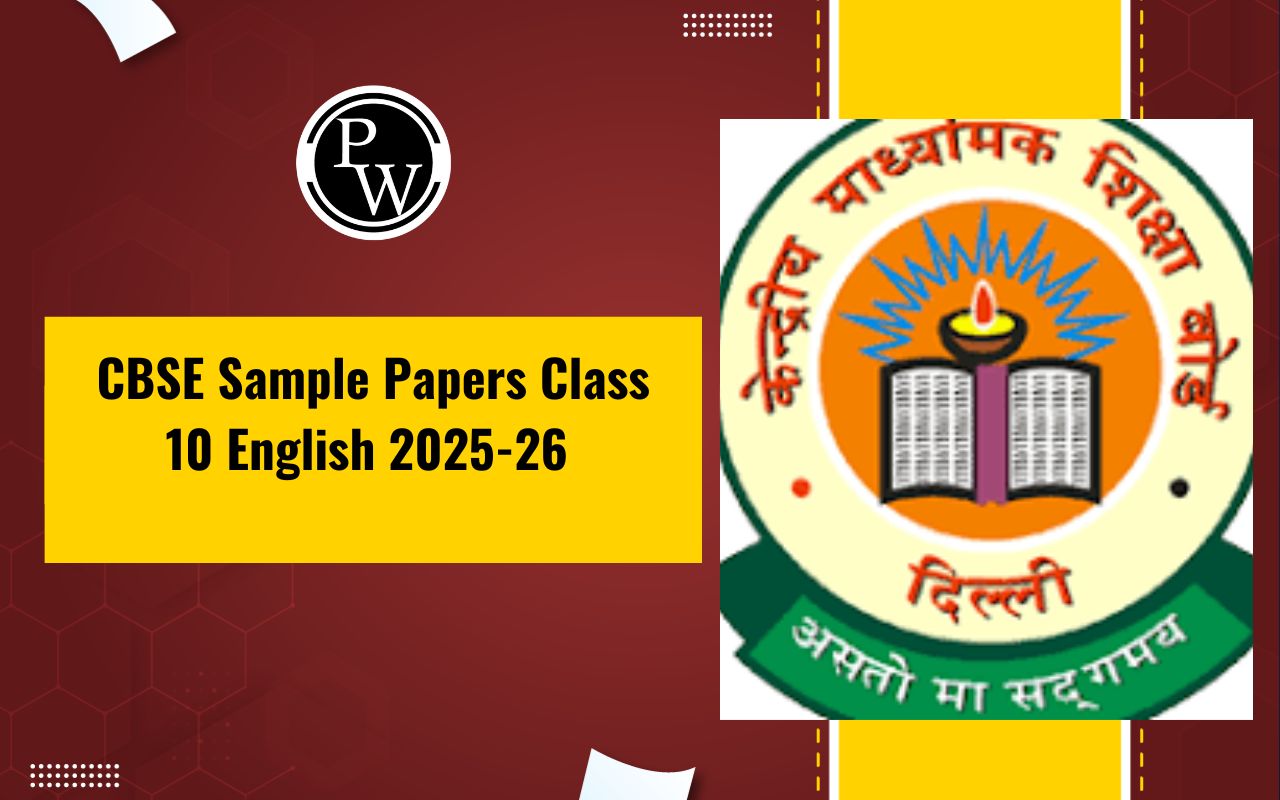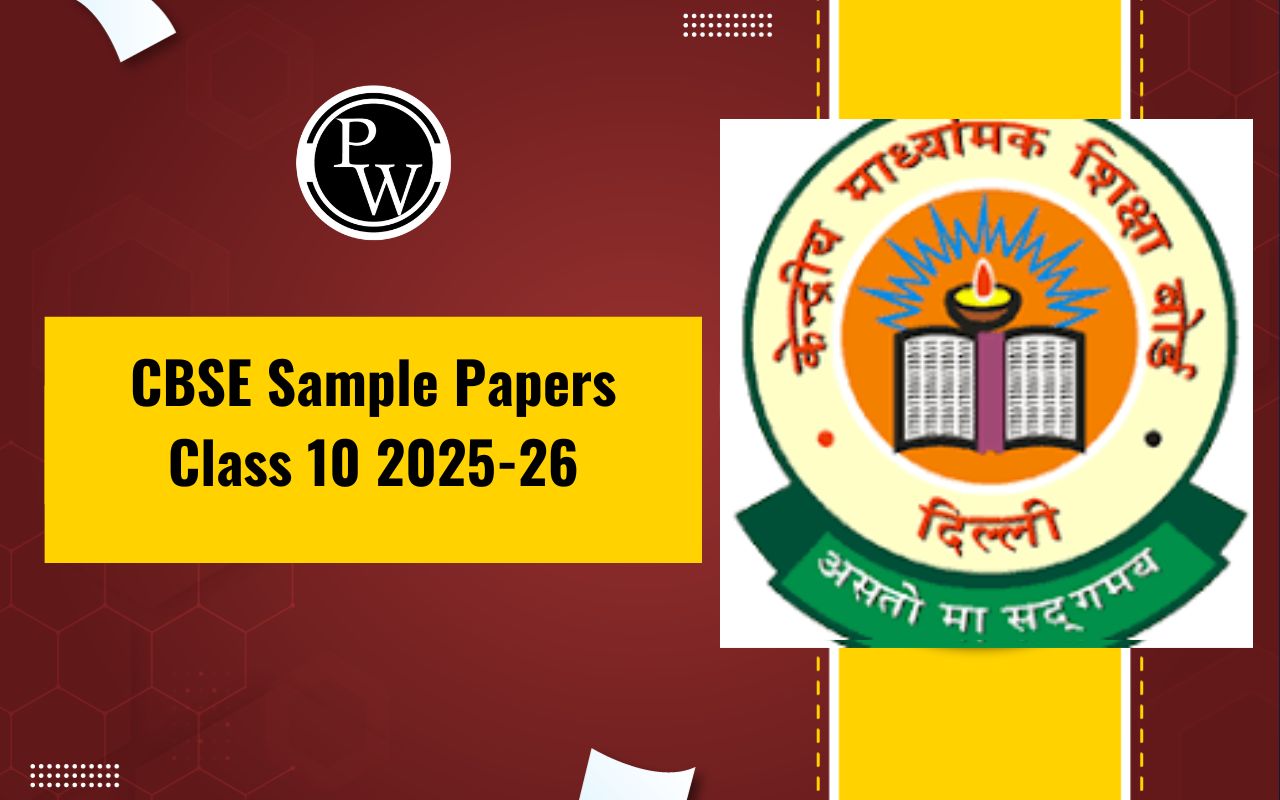

The Science experts at Physics Wallah have meticulously crafted NCERT Solutions for Class 10 Science , encompassing all the exercise questions from the Class 10 Science Books. These solutions offer illustrative examples and solved problems to facilitate a deeper comprehension.
Class 10 Science covers a total of 16 chapters. The NCERT Solutions resources establish a strong foundational base that not only aids students in excelling academically but also equips them to excel in competitive exams. The NCERT Solutions for Class 10 Science are available for free download, making them an invaluable tool for exam preparation. These solutions, designed by the Physics Wallah experts, are aimed at empowering students to excel in their Science studies. we provide clear explanations and incorporate essential questions to foster enhanced learning. The provided links grant easy access to the NCERT Solutions for Class 10 Science and solutions for other subjects like Hindi, English, Maths, and Social Science, conveniently displayed in the table below.NCERT Solutions For Class 10 Science PDF
Class 10 Science has 16 chapters in total. Physics Wallah provides solutions for all these chapters to help you understand the concepts better, get used to the exam style, and become familiar with the types of questions. You can access the PDF format of NCERT Solutions for Class 10 Science below.NCERT Solutions for Class 10 Science Chapter 1 - Chemical Reactions and Equations
Class 10 Science explores Chapter 1, "Chemical Reactions and Equations." This chapter is essential for understanding Chemis try. We learn about writing and balancing chemical equations and the different types of reactions. This chapter also covers the basics of reactions, including their properties. We connect these concepts to everyday situations, making them easier to remember. These NCERT solutions help us practice and reinforce key concepts, like writing and balancing equations. The chapter also touches on oxidation in everyday life. NCERT Science Class 10 Chapter- 1 will teach students about chemical reactions, how to write equations, how to perform combination and decomposition reactions, and more. In previous lessons, we learned about physical and chemical changes in matter. Whenever a chemical change take place, we can say that a chemical reaction occurs. The complete chemical reaction represents the reactants, products, and physical states. Students will also disucss how to write a chemical reaction, a symbolic representation of a chemical reaction. The chapter also explains how different chemical equations can be balanced in different states.Also Check- Important Questions For Class 12 Physics Chapter 1 Chemical reactions and equations
NCERT Solutions for Class 10 Science Chapter 2 - Acids, Bases, and Salts
Also Check- Important Questions For Class 12 Physics Chapter 2 Acids, bases and salt
NCERT Solutions for Class 10 Science Chapter 3 - Metals and Non-Metals
Also Check- Important Questions For Class 12 Physics Chapter 3 Metals and non-metals
NCERT Solutions for Class 10 Science Chapter 4 - Carbon and Its Compounds
Also Check- Important Questions For Class 12 Physics Chapter 4 Carbon and its Compounds
NCERT Solutions for Class 10 Science Chapter 5 - Periodic Classification of Elements
Also Check- Important Questions For Class 12 Physics Chapter 5 Periodic Classification of Elements
NCERT Solutions for Class 10 Science Chapter 6 - Life Processes
NCERT Class 10 Science Chapter-6 discuss about Life Processes. There are six life processes that all living organisms perform. They are movement, respiration, growth, reproduction, excretion, and nutrition. The chapter also teaches about nutrition, which means the process of taking in food and using it for growth, metabolism, and repair. The nutritional phases are reception, digestion, absorption, transport, assimilation, and excretion. Nutrition is further divided into autotrophic nutrition and heterotrophic nutrition. Autotrophic nutrition involves taking in simple inorganic materials from the environment and using an external energy source, such as the Sun, high-energy organic material, to synthesize complex. An heterotrophic nutrition involves the intake of complex material prepared by other organisms.Also Check- Important Questions For Class 12 Physics Chapter 6 Life Processes
NCERT Solutions for Class 10 Science Chapter 7 - Control and Coordination
Also Check- Important Questions For Class 12 Physics Chapter 7 Control and Coordination
NCERT Solutions for Class 10 Science Chapter 8 - Understanding Organism Reproduction
Also Check- Important Questions For Class 12 Physics Chapter 8 How do Organism Reproduce?
NCERT Solutions for Class 10 Science Chapter 9 - Heredity and Evolution
Every organism reproduces either asexually or sexually to produce offsprings, which are similar to the parents. However, offsprings show some variations from their parents and also among themselves, so that each one has its own individual identity. Have you seen any two human beings exactly alike except the identical twins? Besides this, origin of life on earth is an established fact. By the process of gradual and continuous change, living organisms have evolved to exhibit such a wide diversity. In the following chapter, we will learn about heredity and sex-determination and also about evidences and theories of evolution. Topics Covered in this chapter are- Heredity; Mendel’s contribution- Laws for inheritance of traits: Sex determination: brief introduction: (topics excluded – evolution; evolution and classification and evolution should not be equated with progress).Also Check- Important Questions For Class 12 Physics Chapter 9 Heredity and Evolution
NCERT Solutions for Class 10 Science Chapter 10 - Light Reflection and Refraction
Also Check- Important Questions For Class 12 Physics Chapter 10 Light Reflection and Refraction
NCERT Solutions for Class 10 Science Chapter 11 - Human Eye and Colourful World
Also Check- Important Questions For Class 12 Physics Chapter 11 The Human eye and Colorful World
NCERT Solutions for Class 10 Science Chapter 12 - Electricity
Also Check- Important Questions For Class 12 Physics Chapter 12 Electricity
NCERT Solutions for Class 10 Science Chapter 13 - Magnetic Effects of Electric Current
Also Check- Important Questions For Class 12 Physics Chapter 13 Magnetic Effects of Electric Current
NCERT Solutions for Class 10 Science Chapter 14 - Sources of Energy
Also Check- Important Questions For Class 12 Physics Chapter 14 Sources of Energy
NCERT Solutions for Class 10 Science Chapter 15 - Our Environment
Also Check- Important Questions For Class 12 Physics Chapter 15 Our Environment
NCERT Solutions for Class 10 Science Chapter 16 - Management of Natural Resources
Also Check- Important Questions For Class 12 Physics Chapter 16 Sustainable Management of Natural Resources
Benefits of Class 10 Science NCERT Books and Solutions
The Class 10 Science NCERT books and solutions are beneficial for students, teachers, and parents. They have lots of advantages that can make learning and teaching easier. Let's take a look at some of the important benefits:- Comprehensive Coverage: NCERT books provide a comprehensive and structured coverage of the science curriculum for Class 10. They are designed to encompass all essential topics and concepts, ensuring a strong foundation.
- Aligned with Curriculum: NCERT books and solutions perfectly align with the official curriculum prescribed by educational boards. This ensures that students are studying the exact content that will be assessed in exams.
- Concept Clarity: The content in NCERT books is presented clearly and concisely. Complex concepts are broken down into understandable explanations, facilitating better understanding and retention.
- Illustrative Approach: The books often include diagrams, illustrations, and examples that aid visual learners in grasping concepts more effectively. These visuals enhance comprehension and make learning more engaging.
- Language and Writing Style: The language used in NCERT books is student-friendly and easy to comprehend. The writing style is simple, making it accessible to many learners.
- Practice Questions: Each chapter in the NCERT books is accompanied by a set of exercises that include a variety of questions. These questions help students practice and apply what they've learned, reinforcing their understanding.
- Step-by-Step Solutions: NCERT Solutions provide step-by-step explanations for all the exercise questions. This helps students understand the problem-solving process and enhances their problem-solving skills.
- Exam Preparation: Since NCERT books are aligned with the official curriculum, studying from them ensures students are well-prepared for their exams. The solutions also offer insights into the types of questions that can be expected.
- Logical Progression: The content in the books follows a logical progression, building on previously learned concepts. Students can grasp more complex ideas by relating them to foundational knowledge.
- Real-Life Applications : The NCERT books often include real-life examples and applications of scientific principles, helping students see the relevance of what they learn in their everyday lives.
- Quality Content: NCERT is known for its high-quality educational material. The content is accurate, up-to-date, and reviewed by experts, ensuring students receive reliable information.
- Preparation for Competitive Exams: Many competitive exams for higher education are based on the NCERT syllabus. Studying from NCERT books can lay a strong foundation for such exams.
Preparation Tips for Class 10 Science
Class 10 Science holds significant importance as it is the foundation for more advanced scientific concepts in higher grades. To excel in Class 10 Science, consider the following preparation tips: Achieving success in Class 10 Science requires implementing effective strategies. Here are some valuable tips to enhance your preparation:- Understand the Syllabus: First, go through the syllabus thoroughly. Understand what topics are covered and their weightage in the exam.
- Create a Study Schedule: Plan a study schedule that allocates time for each topic. Balance your time between theory and practical concepts.
- Make Notes: While reading, create concise notes. Summarize key points, formulas, and important diagrams. These notes will be handy during revision.
- Practice Numericals: Science involves numerical problems—practice solving these problems to gain confidence and accuracy. Focus on units related to physics and chemistry.
- Diagrams and Flowcharts: Science often involves understanding processes through diagrams and flowcharts. Practice drawing these diagrams to improve visualization.
- Sample Papers and Previous Years' Question Papers: Solve sample and past question papers. This gives you an idea of the exam pattern and helps you manage time during the exam.
- Practice Practical Questions: For biology, practice labeling diagrams, understanding experiments, and identifying specimens. Practice writing balanced chemical equations and solving related problems for physics and chemistry.
- Regular Revision: Regularly revise what you've learned. Set aside dedicated time for revision, especially before exams.
Why Physics Wallah is Best for NCERT Solutions for Class 10 Science
Physics Wallah is a great choice for Class 10 Science NCERT Solutions. We focus on students and make sure they understand Physics well. It helps you get ahead in your studies. The toppers students trust them. we pick important questions for their NCERT solutions to help you prepare well for exams. Students can get these solutions in PDF format, which is easy to use on different devices. Signing up is simple. Physics Wallah is a top education website known for awesome study materials. Physics Wallah is a fantastic option if you're in Class 10 and need help with Science.Recomended Books for CBSE Class 10th Board Exams Preparation
Related Link
NCERT Solutions for Class 10 Science FAQs
What are NCERT Solutions for Class 10 Science?
How many chapters are there in Class 10 Science?
Why are NCERT Solutions important?
What topics are covered in NCERT Solutions for Class 10 Science?












